While reading about CRT on Wikipedia, an information (CRT Allows the use of light guns/pens; https://en.wikipedia.org/wiki/Cathode_ray_tube#Advantages_and_disadvantages) suddenly triggered a a vast lots of memories.
Around early 1990's when I was a toddler, in a local "mela" or fair each year, there was a stall for video games .
They had several big boxes (maybe CPUs), several tiny to large sized, portable monochrome televisions with a mesh of cables. They provided any 1 of 2 kinds of input devices, 1. a game-control with arrow-keys & fire-key etc; as-well, 2. a toy Gun-shaped device.
(The above diagram drawn completely based-upon memory.)
In the game, to destroy the enemy (a rocket, or an octopus, or a ghost etc), the tip of the toy-gun were almost-touched on that object on screen, and on pressing the trigger, the selected rocket were destroyed.
It was, specifically surprising to the kids, because that was a pre-touchscreen era. The television set, acted quite like a touchscreen.
Now I want to know, how that systems worked?
Which-one is acting as the sensor (of the particular place where the rocket was fired)? the toy-gun or the CRT? What is the mechanism to identify a particular spatial-position (of target-object such as rocket) out of many-other objects (other rockets)?



